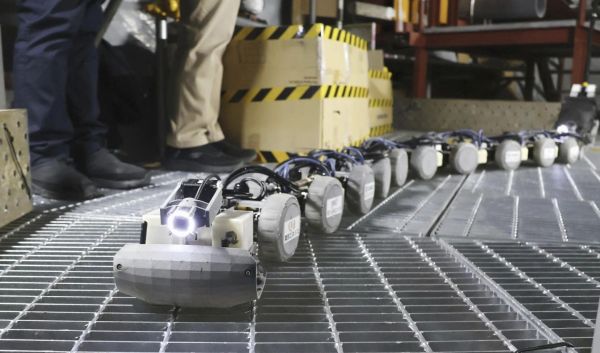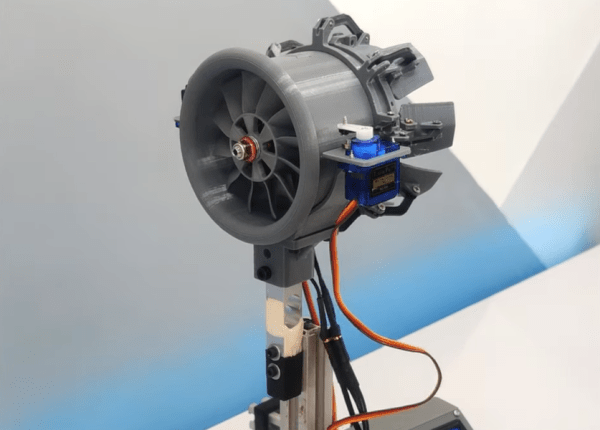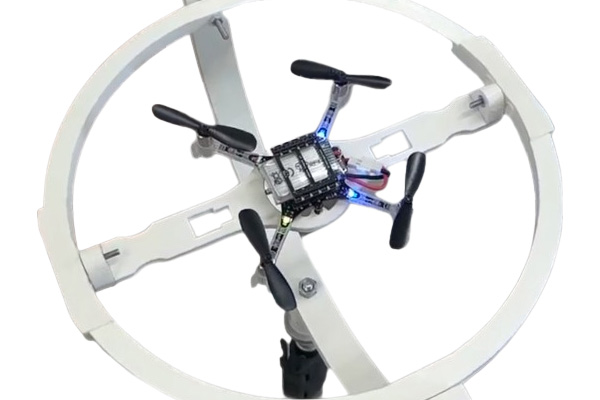Do humanoid robots dream of electric retirement? Who knows, but maybe we can ask Boston Dynamics’ Atlas HD, which was officially retired this week. The humanoid robot, notable for its warehouse Parkour and sweet dance moves, never went into production, at least not as far as we know. Atlas always seemed like it was intended to be an R&D platform, to see what was possible for a humanoid robot, and in that way it had a heck of a career. But it’s probably a good thing that fleets of Atlas robots aren’t wandering around shop floors or serving drinks, especially given the number of hydraulic blowouts the robot suffered. That also seems to be one of the lessons Boston Dynamics learned, since Atlas’ younger, nimbler replacement is said to be all-electric. From the thumbnail, the new kid already seems pretty scarred and battered, so here’s hoping we get to see some all-electric robot fails soon.
drone391 Articles
Hackaday Links: February 11, 2024
Apple’s Vision Pro augmented reality goggles made a big splash in the news this week, and try as we might to resist the urge to dunk on them, early adopters spotted in the wild are making it way too easy. Granted, we’re not sure how many of these people are actually early adopters as opposed to paid influencers, but there was still quite a bit of silliness to be had, most of it on X/Twitter. We’d love to say that peak idiocy was achieved by those who showed themselves behind the wheels of their Teslas while wearing their goggles, with one aiming for an early adopter perfecta, but alas, most of these stories appear to be at least partially contrived. Some people were spotted doing their best to get themselves killed, others were content to just look foolish, especially since we’ve heard that the virtual keyboard is currently too slow for anything but hunt-and-peck typing, which Casey Niestat seemed to confirm with his field testing. After seeing all this, we’re still unsure why someone would strap $4,000 worth of peripheral-vision-restricting and easily fenced hardware to their heads, but hey — different strokes. And for those of you wondering why these things are so expensive, we’ve got you covered.
New Robots To Explore New Areas Of Japan’s Fukushima Daiichi Nuclear Plant
During a press event on January 23rd, Tokyo Electric Power Company (TEPCO) demonstrated two new robots at the mock-up facility at Japan Atomic Energy Agency’s Naraha Center for Remote Control Technology Development (NARREC). As pictured by AP, one is a snake-like robot that should be able to reach very inaccessible areas, while four flying drones will be the first to enter the containment vessel of the Unit 1 reactor for inspection.
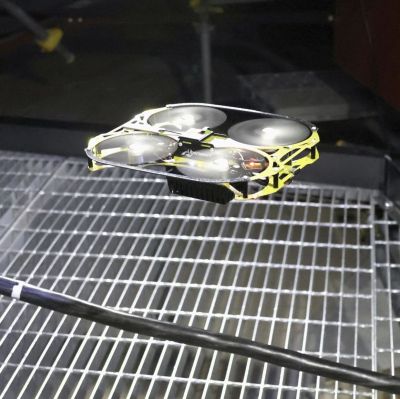
These flying drones are 20 cm across, weigh 185 grams each, and were adapted from an existing model that’s used for boiler inspections. At the Naraha Town facility, operators were able to practice flying it into a copy of the Unit 1’s containment vessel via the piping. As the most heavily damaged unit at the Fukushima Daiichi plant, engineers are interested to learn the details of the fuel and debris that has fallen to the bottom of the vessel so that the clean-up and decontamination steps can be planned.
Most of the current work inside the Fukushimi Daiichi reactor buildings is performed by robots, with the TEPCO gallery providing an overview of the wide range of the types used so far.
One of the first was the PackBot, from US-based iRobot, with many more following for a variety of tasks, from inspection to debris clearing and even dry ice-based decontamination.
A Deep Dive Into Quadcopter Controls
In the old days, building a quadcopter or drone required a lot of hacking together of various components from the motors to the batteries and even the control software. Not so much anymore, with quadcopters of all sizes ready to go literally out-of-the-box. While this has resulted in a number of knock-on effects such as FAA regulations for drone pilots, it’s also let us disconnect a little bit from the more interesting control systems these unique aircraft have. A group at Cornell wanted to take a closer look into the control systems for drones and built this one-dimensional quadcopter to experiment with.
The drone is only capable of flying in one dimension to allow the project to more easily fit into the four-week schedule of the class, so it’s restricted to travel along a vertical rod (which also improves the safety of the lab). The drone knows its current position using an on-board IMU and can be commanded to move to a different position, but it first has to calculate the movements it needs to make as well as making use of a PID control system to make its movements as smooth as possible. The movements are translated into commands to the individual propellers which get their power from a circuit designed from scratch for this build.
All of the components of the project were built specifically for this drone, including the drone platform itself which was 3D printed to hold the microcontroller, motors, and accommodate the rod that allows it to travel up and down. There were some challenges such as having to move the microcontroller off of the platform and boosting the current-handling capacity of the power supply to the motors. Controlling quadcopters, even in just one dimension, is a complex topic when building everything from the ground up, but this guide goes some more of the details of PID controllers and how they help quadcopters maintain their position.
Variable-Nozzle Ducted Fan Provides Fluid Dynamics Lessons
Any student new to the principles of fluid dynamics will be familiar with Bernoulli’s principle and the Venturi effect, where the speed of a liquid or gas increases when the size of the conduit it flows through decreases. When applying this principle to real-world applications, though, it can get a bit more complex than a student may learn about at first, mostly due to the shortcomings of tangible objects when compared to their textbook ideals. [Mech Ninja] discovered this while developing a ducted fan based around an RC motor.
The ducted fan is meant to be a stand-in for a model jet engine, based around a high-powered motor generally designed for drone racing. Most of the build is 3D printed including duct system, but in order to improve the efficiency and thrust beyond simple ducting, [Mech Ninja] designed and built a variable nozzle to more finely control the “exhaust” of his engine. This system is also 3D printed and can restrict or open up the outflow of the ducted fan, much like a real jet engine would. It uses two servos connected to collars on the outside of the engine. When the servos move the collars, a set of flaps linked to the collars can choke or expand the opening at the rear of the engine.
This is where some of the complexity of real-life designs comes into play, though. After testing the system with a load cell under a few different scenarios, the efficiency and thrust weren’t always better than the original design without the variable nozzle. [Mech Ninja] suspects that this is due to the gaps between the flaps, allowing air to escape and disrupting the efficient laminar flow of the air leaving the fan, and plans to build an improved version in the future. Fluid dynamics can be a fairly complex arena to design within, sometimes going in surprising directions like this ducted fan that turned out better than the theory would have predicted, at least until they accounted for all the variables in the design.
Continue reading “Variable-Nozzle Ducted Fan Provides Fluid Dynamics Lessons”
3D Printed Mini Drone Test Gimbal
Drones are a pain, especially mini ones. When you are designing, building (or even reviewing) them, they inevitably fly off in some random direction, inevitably towards your long-suffering dog, hit him in the butt and send him scuttling off in search of a quieter spot for a nap.
[Tristan Dijkstra] and [Suryansh Sharma] have a solution: a mini-drone test gimbal. The two are in the the Networked Systems group and the Biomorphic Intelligence Lab who use CrazyFlie drones in their work, which require regular calibration and testing. This excellent design allows the drone to rotate in three dimensions, while still remaining safely contained. That means I could test the flight characteristics of a drone without endangering my dogs important napping schedule.
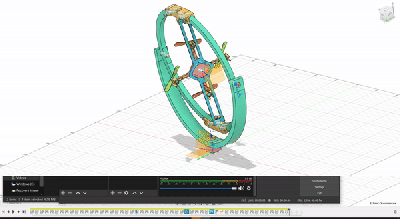
Efforts involved attaching a light tether that restricts the drone until we know how the it flies, but what usually happens is that the tether gets trapped in a rotor, or the tether gets tight and the drone freaks out and crashes into the ground.
Using a gimbal is far more elegant, because it allows the drone to rotate freely in three dimensions, so the basic features of the drone can be established before you let it loose in the skies.
The gimbal was designed with the CrazyFlie in mind, but as there’s nothing more exotic holding the craft down than a zip tie, it should work with similarly sized quadcopters.
Tiny Drone Racing Gate Records Your Best Laps
Professional drone racing is now an elite sport, with all the high-end tech, coverage, and equipment that goes along with it. If you’re just practicing with tiny drones in your home though, you might not be so well equipped. You might want to build something like this tiny FPV drone racing gate from [ProfessorBoots] to help keep track of laptimes while you’re training.
The build uses ultrasonic range sensors to detect when an object passes through the gate. The gate itself consists of a ring of addressable LEDs in strip form. The gate switches from green to red as a visual indicator of a drone passing through the gate. There’s also a small 2.4-inch touch screen that displays laptimes and enables the gate to be configured quickly and easily. The gate also serves up a webpage on the local network for viewing laptimes in a browser.
It does bear noting that at this stage, it’s primarily a practice tool. The gate doesn’t currently work for proper competitions, as it has no way of determining which drone might be flying through the gate at any one time.
It’s not the first time we’ve seen a TinyWhoop drone, either. Video after the break.
Continue reading “Tiny Drone Racing Gate Records Your Best Laps”


